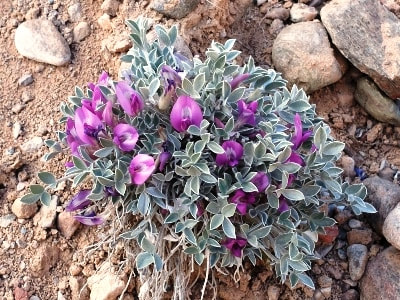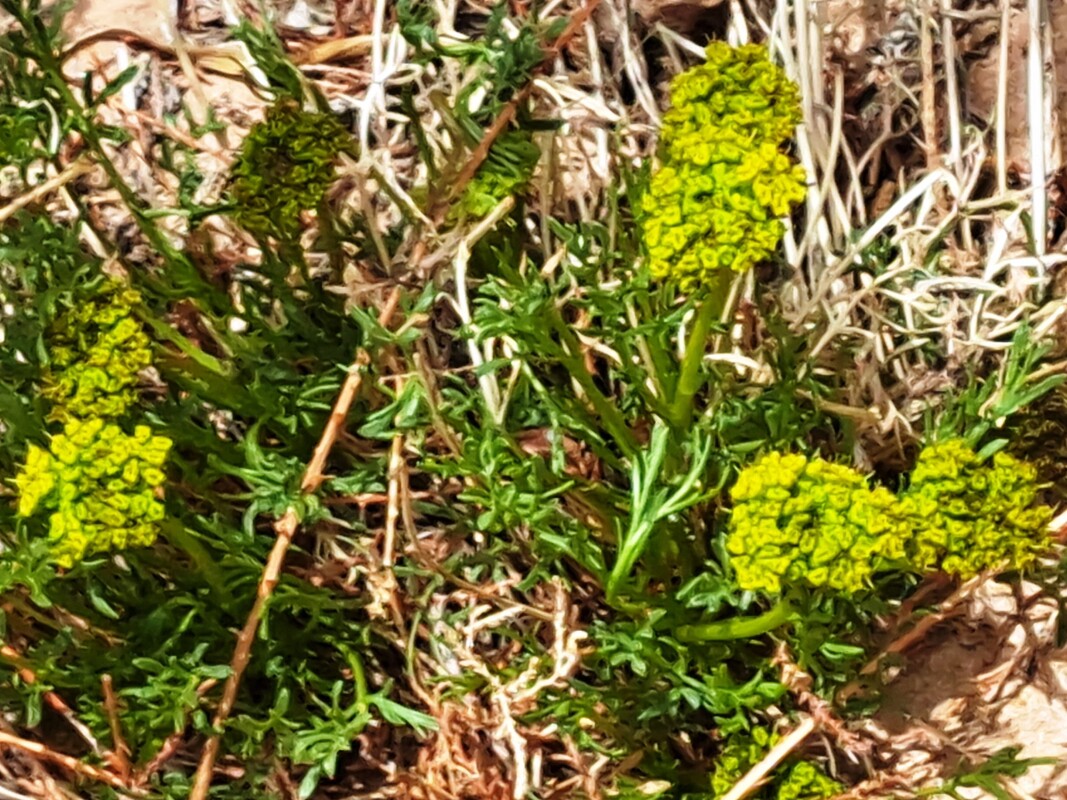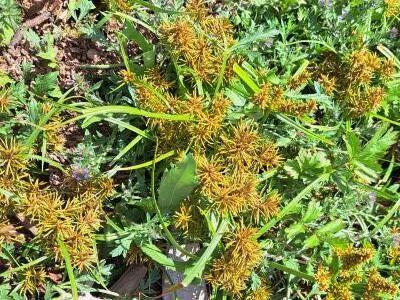|
The Bloom Blog Blooming this week in the environs of Abiquiú By Wildflowers of the Southern Rocky Mountains Found in moist areas, stream sides
Seen blooming in April by the Rio Chama Silver Buffaloberry is a native shrub growing to 15 feet tall in thickets. The silvery leaves, habitat and thorny stems cause it to be mistaken for Russian Olive, which is an invasive species. Several things differentiate them; leaves grow in opposite pairs while the leaves of the Russian Olive are alternate, flowers of the Russian Olive are much larger, brighter yellow, tubular and bloom later, the fruit is a red or gold berry while the Russian Olive produces “olives” covered with silvery scale, and the Russian Olive can grow to 35 feet tall. Male and female flowers are produced on separate plants. The tiny yellowish-brown flowers cluster on the stems. The photo is of male flowers. The fruits are an important source of food for birds and animals and are edible for humans, but tart. Native Americans consumed fruits both fresh and dried. Fruits were eaten as a laxative and for stomach troubles and fevers. Fruits were used occasionally in ceremonial feasts at female puberty rites and to make a red dye. Source. If you are trying to identify a different flower then you can check what other flowers bloom this month. If you cannot identify a flower from the website, send a photo and where you took it to [email protected]. Read online for tips.
0 Comments
Found in sandy, dry areas
Photo taken in April in Red Wash Canyon The Astragalus genus is very large and individual species are usually identified by their seed pod rather than their flower or leaves; several varieties of Milkvetch grow in this area. This beautiful little plant grows low to the ground with five to eleven silky leaflets. Flowers are showy, bright pink/purple with a lighter center and are over one inch long. Seed pods are curved and covered in silky, white hairs. Specific uses for this species are unknown, but other species in the genus have uses. The plant is considered poisonous, especially to stock and horses, however medicinally; a decoction of whole plant used as a wash for the head, hair and whole body, plant used for stomach disorders, as a gargle for sore throats, poultice of crushed leaves applied to lame back, applied as an ointment for animals with urination troubles, roots chewed as a cathartic, infusion of root used as a wash for sores and as a wash for granulated eyelids and toothaches, also plants used as a ceremonial emetic, seeds used for food, and pounded seeds mixed with other foods and used as a spice. Source. If you trying to identify a different flower then you can check what other flowers bloom this month. If you cannot identify a flower from the website, send a photo and where you took it to [email protected]. Read online for tips. The Bloom Blog Blooming this week in the environs of Abiquiú By Wildflowers of the Southern Rocky Mountains By Marilyn Phillips
Found in dry, disturbed areas, on slopes Seen blooming in April in Arroyo Trujillo Another early bloomer, Golden Smoke grows to about 12 inches tall and is easily recognized by the irregular yellow flowers in long, loose clusters and its finely divided, bluish-green leaves. The seed pods are bean-like and curve upwards. Corydalis species are potentially toxic in moderate doses. However, a tea made from the plant is used in the treatment of painful or irregular menstruation, diarrhea, bronchitis, heart diseases, sore throats and stomach aches. Externally, it is used as a lotion on backaches, hand sores etc. and as a gargle for sore throats. Source. If you trying to identify a different flower then you can check what other flowers bloom this month. If you cannot identify a flower from the website send a photo and where you took it to [email protected]. Read online for tips. Found in dry, sandy, gravelly areas
Seen blooming in March on the Pajaro Trail below Abiquiu Dam The first blooms I saw this year were New Mexico False Carrots. Flowers in the Parsley family bloom early and have tiny flowers with five petals in usually flat heads. This family is also commonly called Parsley or Celery. The New Mexico False Carrot grows to 8 inches high in a dense bright green tuft with dry stalks from the previous year. The flowers bloom on stalks barely 2 inches high which elongate with age. Leaves are divided into narrow segments. It is listed as a New Mexico Rare Plant but it is not difficult to find in Plaza Blanca and Red Wash Canyons. Source. No traditional uses could be found but other members of this family are edible. If you trying to identify a different flower then you can check what other flower bloom this month. If you cannot identify a flower from the website send a photo and where you took it to [email protected]. Read online for tips. Found in disturbed, muddy places
Seen blooming in September at Abiquiu Lake A walk around the peninsula at Abiquiu Lake has changed since the water level rose so high in the spring. In places there is now a broad green carpet of vegetation between the high-water mark and the current water level. Plants to be seen are Bracted Vervain, Cocklebur, Spotted Lady’s Thumb, Crownbeard, Ragweed, and two kinds of Flatsedge; all plants that like a moist environment and are not usually seen around Abiquiu Lake. I wonder what spring will bring. Rusty Flatsedge is a grass that can grow from 4 to 20 inches tall, these are about 8 inches. Grasses are wildflowers too but their flowers do not need to be showy to attract the birds and the bees because they are pollinated by the wind. Flatsedge stems are sharply three-sided. Its golden flower spikes turn rusty with age. As its name implies, the roots have a floral fragrance when crushed. Traditionally the seeds were eaten. If you are trying to identify a different flower then you can check what other flowers bloom this month. If you cannot identify a flower from the website, send a photo and where you took it to [email protected]. Read online for tips. |
AuthorI am Marilyn Phillips, a native of England, whose love of nature and the outdoors from childhood brought me by a circuitous route to Crested Butte, Colorado in 1993 and 16 years later to northern New Mexico. My exploration of the many trails in these areas, my interest in wildflowers and photography, and career in computer system design came together in this creation. If you have any corrections, comments or questions, please contact me by email. Archives
September 2025
Categoriescopyright © 2020
|







 RSS Feed
RSS Feed